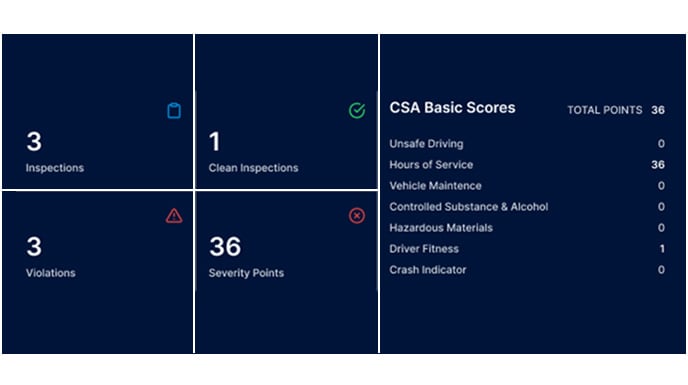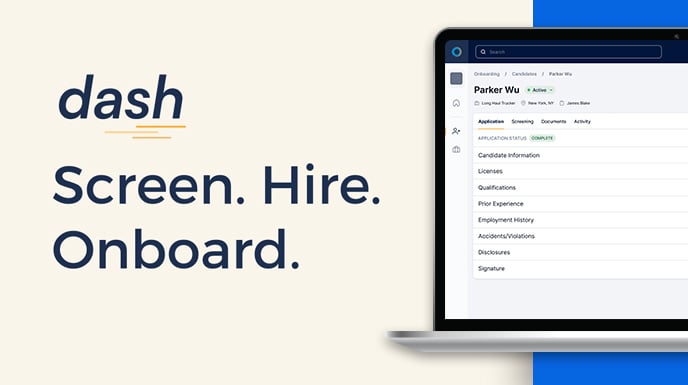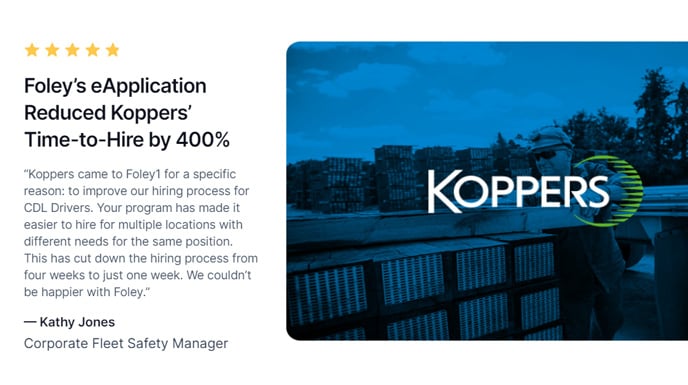FMCSA Regulatory Update: Crash Preventability Determination Program

The FMCSA’s Crash Preventability Determination Program (CPDP) now evaluates 21 specific types of crashes and adjusts the information in the Agency’s Safety Measurement System (SMS) to identify crashes that were not preventable.
If you or a driver were involved in an eligible crash on or after December 1, 2024, you can submit a Request for Data Review (RDR) along with the required police accident report and any other supporting documents, photos, or videos through the Agency’s DataQs system.
Crashes determined to be "Not Preventable" through the CPDP are excluded from the Crash Indicator Behavior Analysis Safety Improvement Category (BASIC) calculation in the FMCSA’s Safety Measurement System (SMS). However, these crashes are still listed on the website and are noted in the FMCSA’s Pre-employment Screening Program (PSP).
What are the 21 types of commercial motor vehicle crashes eligible for review under the CPDP?
The following crash types are eligible for submission to the FMCSA CPDP program:
- The CMV was struck in the rear by another motorist.
- The CMV was struck on the side at the rear by another motorist.
- The CMV was struck on the side by another motorist traveling in the same direction.
- The CMV was struck because another motorist was driving in the wrong direction.
- The CMV was struck because another motorist was making a U-turn or illegal turn.
- The CMV was struck while legally stopped at a traffic control device or parked, including when the vehicle was unattended.
- The CMV was struck because another motorist did not stop or slow in traffic.
- The CMV was struck because another motorist failed to stop at a traffic control device.
- The CMV was struck because another individual was under the influence (or related violation, such as operating while intoxicated), according to the legal standard of the jurisdiction where the crash occurred.
- The CMV was struck because another motorist experienced a medical issue that contributed to the crash.
- The CMV was struck because another motorist fell asleep.
- The CMV was struck because another motorist was distracted (e.g., using a cell phone, GPS, or interacting with passengers).
- The CMV was struck by cargo or equipment from another vehicle, or by debris (e.g., fallen rock, fallen trees, unidentifiable items in the road).
- The CMV crash was a result of an infrastructure failure.
- The CMV struck an animal.
- The CMV crash involved a suicide death or suicide attempt.
- The CMV was struck because another motorist was entering the roadway from a private driveway or parking lot.
- The CMV was struck because another motorist lost control of the vehicle.
- The CMV was involved in a crash with a non-motorist.
- The CMV was involved in a crash type that seldom occurs and does not meet another eligible crash type (e.g., being struck by an airplane or skydiver, or being struck by a deceased driver in another vehicle).
- Any other crash involving a CMV where a video demonstrates the sequence of events of the crash.
How Do I Submit a Crash for FMCSA Review?
Both companies and drivers can submit crash preventability Requests for Data Review (RDRs) through the FMCSA DataQs website. Please note: Due to a high volume of submissions, crash reviews are currently averaging a 90-day processing period.
The graphic below explains the RDR process.

The FMCSA will move the crash to an eligible crash type if the crash is not eligible under the crash type for which it was submitted; however, if the crash does not meet one of the eligible crash types, the RDR will be closed.
What Are the Potential Crash Determinations the FMCSA Can Make?
Once the RDR is successfully completed, the FMCSA SMS will display crashes determined to be not preventable in a separate table titled “Reviewed – Not Preventable Crashes.” Crashes found to be "Not Preventable" through the CPDP will not be used in calculating the company's Crash Indicator BASIC measure, which FMCSA uses to prioritize carriers for safety interventions and compliance audits. "Not Preventable" determinations will also be noted in the Pre-employment Screening Program (PSP) at the driver level.
The SMS will display reviewed crashes determined to be Preventable or Undecided with all other crashes, using the following notations:
- Preventable: FMCSA reviewed this crash and determined that it was Preventable.
- Undecided: FMCSA reviewed this crash and could not make a preventability determination based on the evidence provided.
The FMCSA will make an "Undecided" determination if the documentation provided with the RDR does not allow for a conclusive decision. If the submitter fails to provide any requested information within 14 calendar days, the crash will remain "Undecided."
If a submitter receives a determination that the crash was "Preventable" or "Undecided," or if the RDR is closed due to a lack of additional requested documents, the RDR may be re-opened once additional evidence is provided. FMCSA will reconsider the request if the submitter provides additional documentation to support the case.
For more information on the FMCSA Crash Preventability Determination Program, visit their official website.
Help Prevent Crashes with an MVR Monitoring Program
Although the FMCSA CPDP will likely improve the evaluation of companies' safety measures, it's still crucial to encourage drivers to prevent avoidable crashes in the first place. Enrolling drivers in an MVR monitoring program can help establish firm safety standards to help ensure your employees take crash prevention seriously.
To learn more about how an MVR monitoring program can benefit your company (including potentially reducing your commercial insurance premiums), download our free guide, MVR Monitoring: How to Proactively Protect Your Business in 2025, or click here to schedule a free MVR Monitor program demo with one of our DOT compliance experts.
Related Articles
April 2023 Significant Rulemaking Report
October 2023 FMCSA Significant Rulemaking Report
A Step Toward Roadway Safety: Large Truck & Bus Crashes on the Decline
.png)



